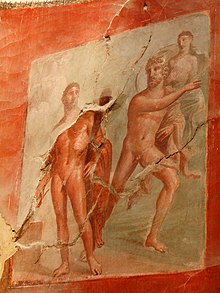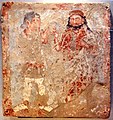
Syncretism is the practice of combining different beliefs and various schools of thought. Syncretism involves the merging or assimilation of several originally discrete traditions, especially in the theology and mythology of religion, thus asserting an underlying unity and allowing for an inclusive approach to other faiths. While syncretism in art and culture is sometimes likened to eclecticism, in the realm of religion, it specifically denotes a more integrated merging of beliefs into a unified system, distinct from eclecticism, which implies a selective adoption of elements from different traditions without necessarily blending them into a new, cohesive belief system. Syncretism also manifests in politics, known as syncretic politics.
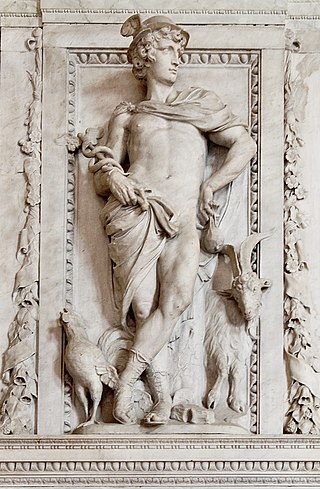
Mercury is a major god in Roman religion and mythology, being one of the 12 Dii Consentes within the ancient Roman pantheon. He is the god of financial gain, commerce, eloquence, messages, communication, travelers, boundaries, luck, trickery, and thieves; he also serves as the guide of souls to the underworld and the "messenger of the gods".

Isis was a major goddess in ancient Egyptian religion whose worship spread throughout the Greco-Roman world. Isis was first mentioned in the Old Kingdom as one of the main characters of the Osiris myth, in which she resurrects her slain brother and husband, the divine king Osiris, and produces and protects his heir, Horus. She was believed to help the dead enter the afterlife as she had helped Osiris, and she was considered the divine mother of the pharaoh, who was likened to Horus. Her maternal aid was invoked in healing spells to benefit ordinary people. Originally, she played a limited role in royal rituals and temple rites, although she was more prominent in funerary practices and magical texts. She was usually portrayed in art as a human woman wearing a throne-like hieroglyph on her head. During the New Kingdom, as she took on traits that originally belonged to Hathor, the preeminent goddess of earlier times, Isis was portrayed wearing Hathor's headdress: a sun disk between the horns of a cow.

Hermes Trismegistus is a legendary Hellenistic period figure that originated as a syncretic combination of the Greek god Hermes and the Egyptian god Thoth. He is the purported author of the Hermetica, a widely diverse series of ancient and medieval pseudepigraphica that lay the basis of various philosophical systems known as Hermeticism.

Sabazios is a deity originating in Asia Minor. He is the horseman and sky father god of the Phrygians and Thracians.

Classical mythology, also known as Greco-Roman mythology or Greek and Roman mythology, is the collective body and study of myths from the ancient Greeks and ancient Romans. Mythology, along with philosophy and political thought, is one of the major survivals of classical antiquity throughout later Western culture. The Greek word mythos refers to the spoken word or speech, but it also denotes a tale, story or narrative.

In ancient Greek religion and mythology, the twelve Olympians are the major deities of the Greek pantheon, commonly considered to be Zeus, Poseidon, Hera, Demeter, Aphrodite, Athena, Artemis, Apollo, Ares, Hephaestus, Hermes, and either Hestia or Dionysus. They were called Olympians because, according to tradition, they resided on Mount Olympus.
Yaldabaoth, otherwise known as Jaldabaoth or Ialdabaoth, is a malevolent God and demiurge in various Gnostic sects and movements, sometimes represented as a theriomorphic, lion-headed serpent. He is identified as the false god who keeps the souls trapped in physical bodies, imprisoned in the material universe.

Germanic paganism or Germanic religion refers to the traditional, culturally significant religion of the Germanic peoples. With a chronological range of at least one thousand years in an area covering Scandinavia, the British Isles, modern Germany, and at times other parts of Europe, the beliefs and practices of Germanic paganism varied. Scholars typically assume some degree of continuity between Roman-era beliefs and those found in Norse paganism, as well as between Germanic religion and reconstructed Indo-European religion and post-conversion folklore, though the precise degree and details of this continuity are subjects of debate. Germanic religion was influenced by neighboring cultures, including that of the Celts, the Romans, and, later, by the Christian religion. Very few sources exist that were written by pagan adherents themselves; instead, most were written by outsiders and can thus present problems for reconstructing authentic Germanic beliefs and practices.

Ancient Celtic religion, commonly known as Celtic paganism, was the religion of the ancient Celtic peoples of Europe. Because there are no extant native records of their beliefs, evidence about their religion is gleaned from archaeology, Greco-Roman accounts, and literature from the early Christian period. Celtic paganism was one of a larger group of polytheistic Indo-European religions of Iron Age Europe.
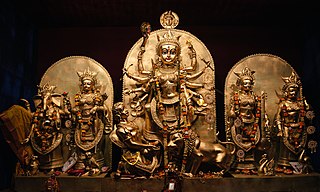
A pantheon is the particular set of all gods of any individual polytheistic religion, mythology, or tradition.
Interpretatio germanica is the practice by the Germanic peoples of identifying Roman gods with the names of Germanic deities. According to University of Bonn philologist Rudolf Simek, this occurred around the 1st century AD, when both cultures came into closer contact.

Serapis or Sarapis is a Graeco-Egyptian god. A syncretic deity derived from the worship of the Egyptian Osiris and Apis, Serapis was extensively popularized in the third century BC on the orders of Greek Pharaoh Ptolemy I Soter, as a means to unify the Greek and Egyptian subjects of the Ptolemaic Kingdom.
The Alcis or Alci were a pair of divine young brothers worshipped by the Naharvali, an ancient Germanic tribe from Central Europe. The Alcis are solely attested by Roman historian and senator Tacitus in his ethnography Germania, written around 98 AD.

The concept of Hellenistic religion as the late form of Ancient Greek religion covers any of the various systems of beliefs and practices of the people who lived under the influence of ancient Greek culture during the Hellenistic period and the Roman Empire. There was much continuity in Hellenistic religion: people continued to worship the Greek gods and to practice the same rites as in Classical Greece.

The Dii Consentes, also known as Di or Dei Consentes, or The Harmonious Gods, is an ancient list of twelve major deities, six gods and six goddesses, in the pantheon of Ancient Rome. Their gilt statues stood in the Roman Forum, and later apparently in the Porticus Deorum Consentium.
In Roman historian Tacitus's first century CE book Germania, Tacitus describes the veneration of what he deems as an "Isis" of the Suebi. Due to Tacitus's usage of interpretatio romana elsewhere in the text, his admitted uncertainty, and his reasoning for referring to the veneration of an Egyptian goddess by the Suebi—a group of Germanic peoples—scholars have generally held that Tacitus's identification is incorrect, and have debated what goddess Tacitus refers to.
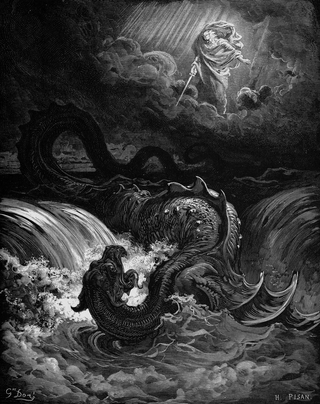
Interpretatio Christiana is adaptation of non-Christian elements of culture or historical facts to the worldview of Christianity. The term is commonly applied to recasting of religious and cultural activities, beliefs and imageries of "pagan" peoples into a Christianized form as a strategy for Christianization. From a Christian perspective, "pagan" refers to the various religious beliefs and practices of those who adhered to non-Abrahamic faiths, including within the Greco-Roman world the traditional public and domestic religion of ancient Rome, imperial cult, Hellenistic religion, Cult of Dionysus, the ancient Egyptian religion, Celtic and Germanic polytheism, initiation religions such as the Eleusinian Mysteries and Mithraism, the religions of the ancient Near East, and the Zoroastrianism.
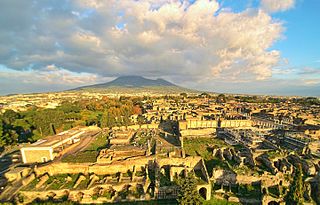
Several non-native societies had an influence on Ancient Pompeian culture. Historians’ interpretation of artefacts, preserved by the Eruption of Mount Vesuvius in 79, identify that such foreign influences came largely from Greek and Hellenistic cultures of the Eastern Mediterranean, including Egypt. Greek influences were transmitted to Pompeii via the Greek colonies in Magna Graecia, which were formed in the 8th century BC. Hellenistic influences originated from Roman commerce, and later conquest of Egypt from the 2nd century BC.

